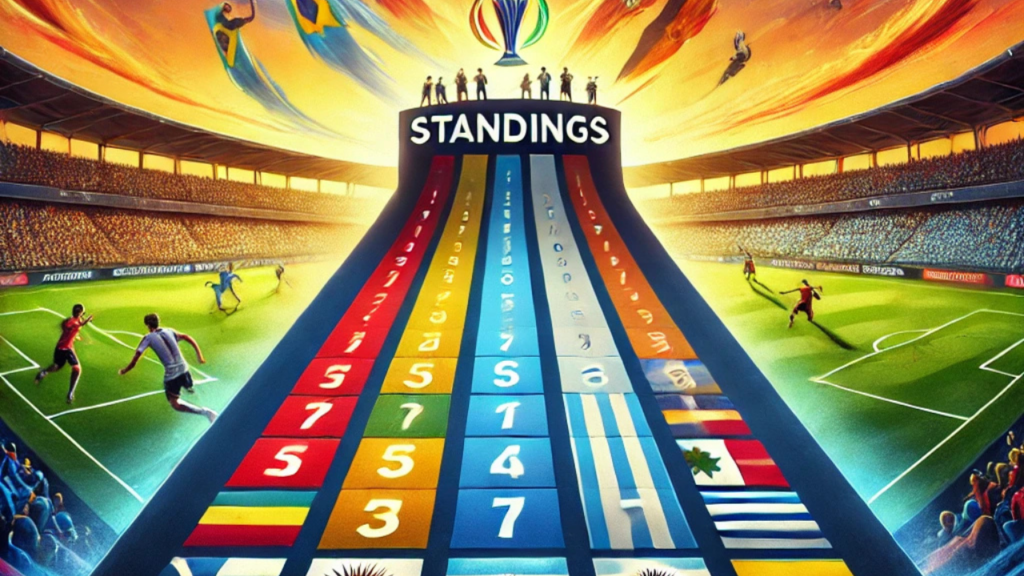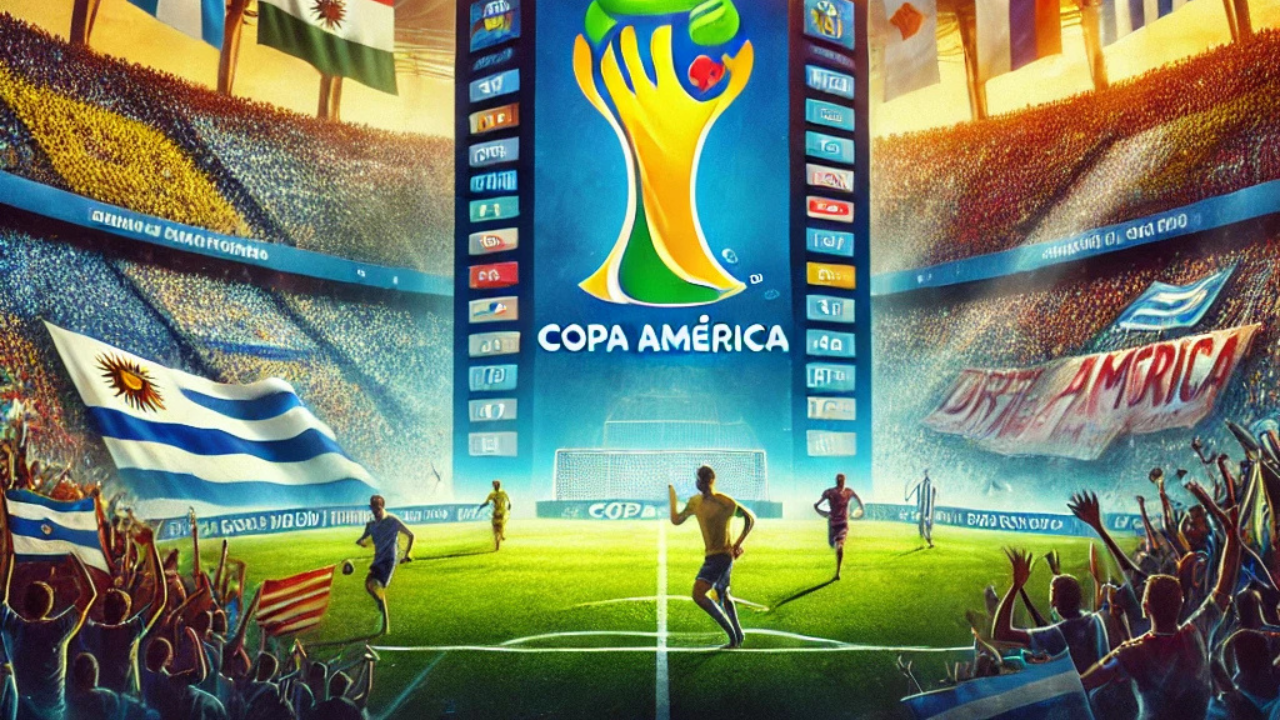Introduction
The Copa América is one of the most prestigious football tournaments in the world, bringing together the finest teams from South America to compete for regional supremacy. posiciones de copa américa While the thrilling matches and dazzling goals often take the spotlight, understanding the “posiciones” (standings) adds an essential layer of appreciation to the competition. Standings provide a snapshot of a team’s journey through the tournament, reflecting their performance, strategy, and resilience.
This article will delve deep into how the standings system works, examine historical highlights that have shaped the tournament, and explore the factors influencing a team’s position. Whether you’re a passionate football fan or a casual viewer, this guide will help you grasp the importance of standings in Copa América and how they impact the beautiful game.
Understanding the Standings System in Copa América
The standings system in Copa América is central to determining which teams advance through the tournament stages. It is based on a points system that rewards consistent performance. A win earns a team three points, a draw one point, and a loss yields no points. These points accumulate throughout the group stage, creating a hierarchy of teams.
When teams are tied on points, goal difference becomes the primary tiebreaker, highlighting the significance of both offensive and defensive play. If the difference doesn’t separate the teams, the total goals scored are considered. Finally, head-to-head results are examined to break any remaining ties, ensuring a fair and competitive structure.
The tournament typically begins with a group stage where teams are divided into groups. Each team plays against every other team in its group. The top teams from each group advance to the knockout rounds, where standings no longer apply, and single elimination decides the winners. This structure underscores the importance of securing a favorable position early in the tournament.
Standings aren’t just numbers; they narrate the story of a team’s journey. They reveal strengths, weaknesses, and moments of brilliance, making them an indispensable part of the Copa América experience.
Historical Highlights of Copa América Standings

Copa América has a rich history of dramatic standing shifts and memorable moments. One of the most iconic examples occurred in the 1991 tournament when Argentina, led by Gabriel Batistuta, dominated the standings with an unbeaten run. Their tactical prowess and teamwork set a benchmark for excellence.
In contrast, the 2011 edition witnessed an underdog story when Venezuela, traditionally considered a weaker team, advanced to the semifinals. Their surprising rise in the standings captured global attention and inspired fans across the continent. This moment highlighted how standings can defy expectations and bring unpredictability to the tournament.
Brazil, Argentina, and Uruguay have consistently topped the standings over the years, showcasing their dominance in South American football. However, the emergence of teams like Chile and Colombia has added competitive depth to the tournament. Chile’s back-to-back victories in 2015 and 2016 were remarkable and a testament to their ability to climb the standings with determination and skill.
The standings have also seen dramatic collapses. For instance, in the 2019 tournament, Argentina’s slow start in the group stage jeopardized their advancement, only for them to recover in the later matches. Such moments underline how dynamic and unpredictable the standings can be.
Factors Influencing Team Positions
A team’s position in Copa América is influenced by many factors, both on and off the field. The strategic decisions made by coaches play a pivotal role. For example, selecting a balanced lineup that blends experienced players with emerging talent can impact a team’s ability to perform consistently. Tactical formations, whether defensive or attacking, also shape outcomes and standings.
Individual player performances are equally critical. A single player’s brilliance can shift the course of a game and, consequently, a team’s position in the standings. Lionel Messi’s influence on Argentina’s standings over multiple tournaments is a prime example of this phenomenon.
External factors, such as the host country’s advantage, can also affect positions. Teams playing in familiar conditions often perform better, aided by passionate home crowds and acclimatization to weather or altitude. In the 2019 Copa América, hosted by Brazil, the home team leveraged these factors to secure the top position and ultimately win the tournament.
Refereeing decisions and controversies can also affect standings. While the aim is always fairness, contentious calls can influence match outcomes, altering the dynamics of the standings. Such incidents add to the drama and intensity of the competition.
Evolution of the Standings System
Since its inception, the Copa América has undergone significant changes, and the standings system has evolved accordingly. Initially, the tournament had fewer teams and a more straightforward format, making the standings less complex. Over time, including more teams and introducing the group stage added layers of calculation and competition.
Adopting the current points system aligns with international standards, making it easier for fans to understand and compare. Changes like introducing penalty shootouts in knockout rounds have also impacted how teams approach the group stage, emphasizing the importance of securing a strong position early on.
The standings system has been modernized and adapted to ensure fair competition. For instance, tiebreaker criteria like goal difference and head-to-head results prioritize performance over luck. This evolution reflects the tournament’s commitment to maintaining its integrity and appeal.
Conclusion
The standings in Copa América are more than just a record of wins and losses; they are a dynamic reflection of the tournament’s spirit, challenges, and triumphs. From the meticulous calculation of points to the dramatic shifts in positions, standings encapsulate the essence of South American football.
Fans better appreciate the tournament by understanding the system, historical highlights, and influencing factors. Whether it’s a dominant run by a powerhouse team or an inspiring rise by an underdog, the standings tell stories that resonate beyond the field. So, as the next Copa América unfolds, keep an eye on the “posiciones” to fully immerse yourself in the action.
FAQs
What does “posiciones” mean in the context of Copa América?
Posiciones” refers to the team standings during the tournament, indicating their rank based on performance.
How are standings determined in the group stage of Copa América?
Standings are based on points earned from wins, draws, and losses, with tiebreakers like goal difference and head-to-head results.
Which team has the best historical standings in Copa América?
Uruguay holds the record for the most Copa América titles, often achieving top positions in the tournament.
Has the standings format changed over the years?
The format has evolved, incorporating group stages and tiebreaker criteria to enhance competition.
How does a team’s position affect their chances in the tournament?
A strong position ensures advancement to the knockout stages, while a poor position may lead to early elimination.
What are some of the most surprising standings outcomes in Copa América history?
Examples include Venezuela’s rise in 2011 and unexpected struggles by traditional powerhouses like Argentina in 2019.
You May Also Read: https://ventsbuzz.pro/invest1now-com-best-investments/




